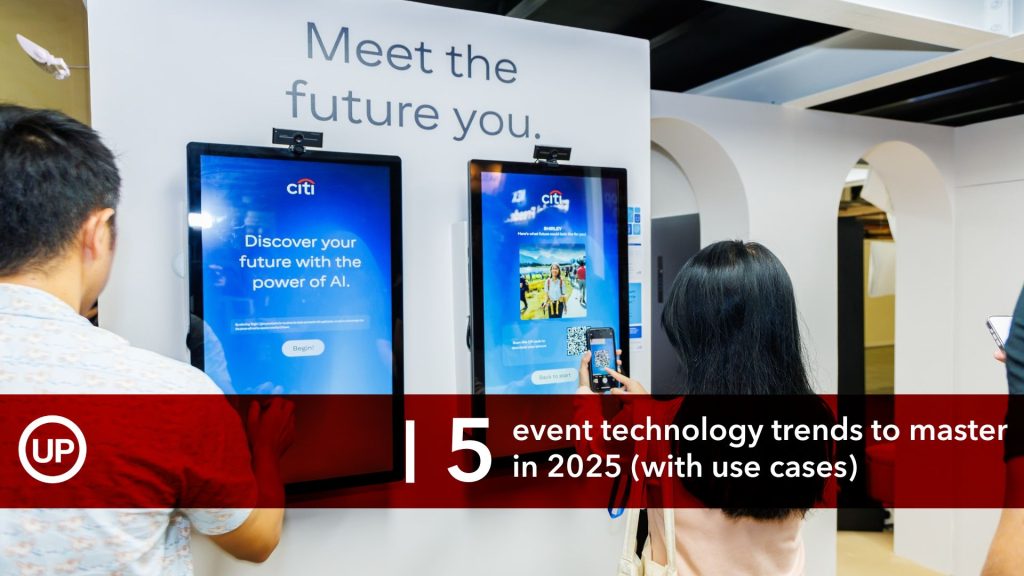
The event industry is no stranger to change, but the pace of technological innovation is accelerating faster than ever. In 2025, staying ahead of the curve will not just be an advantage – it’ll be essential to the success of your event.
Instead of static displays and clunky processes, the future of events will be defined by immersive, personalised and data-driven experiences. We dive through buzzwords such as AI, AR and contactless registration to tell you all about the new generation of event technology that will be key to engaging, surprising and impressing your event attendees.
1. Event apps (with personalised and interactive content)
Event apps may have been around for the past few years, but what they’re being used for has evolved tremendously. More than just showing the agenda and schedule, speaker information, sponsor pages and maps and directions, event organisers are increasingly leaning on their event apps to facilitate custom attendee journeys.
This means matching different attendee personas with specific sessions or tracks, highlighting certain exhibitors and even helping attendees to connect with other attendees who share an interest – all within an event app.
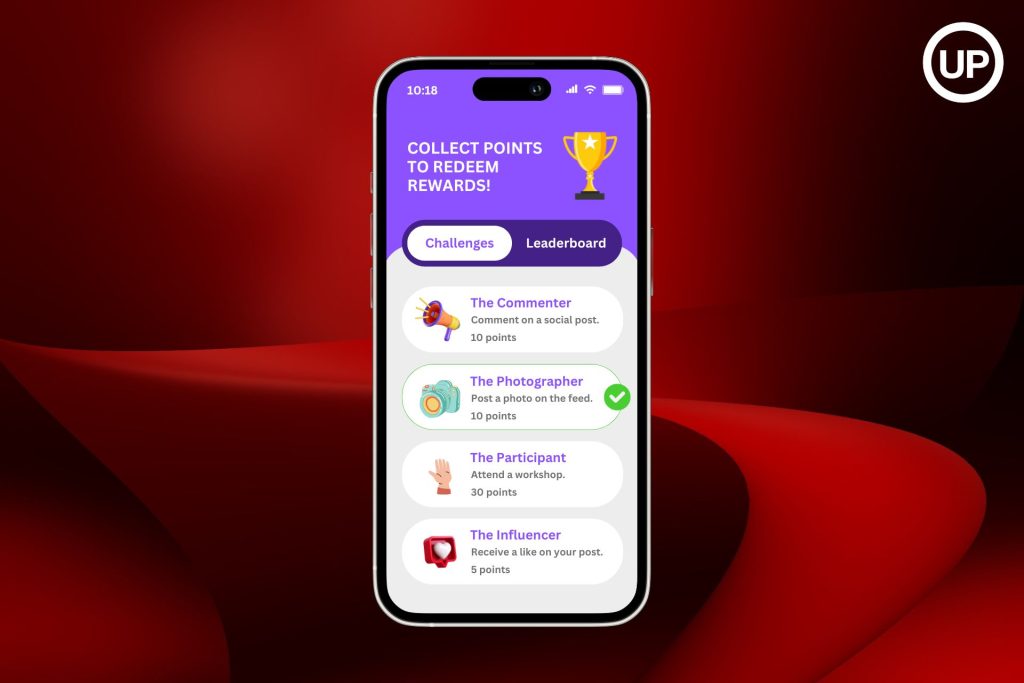
We’re also seeing event organisers experiment with in-app gamification. For example, you could get your attendees to upload photos of their favourite activities on the show floor, comment on others’ posts or even log their attendance at a particular session in exchange for points on a leaderboard.
Of course, there are some crucial considerations before rolling out your event app. Most providers today offer the option to white label your event app, so you get a stand-alone app with your event’s branding. Alternatively, you may choose to create a page within a provider-branded app, which your attendees will be able to access with a unique code.
The most ideal solution for your event depends on the features that are the most important to you. If you’re hosting a smaller-scale event and need to deploy an event app quickly, then a provider-branded app will suffice. If you’re expecting hundreds of attendees and want more control over the design and functionality of your app, then we recommend a white-labelled one.
2. Projection mapping
Spectators at the track cycling competition at the Paris 2024 Olympic Games were treated to one of the most show-stopping demonstrations of projection mapping, which was brought to life with 40 ultra-high-definition projectors hanging from the ceiling.
The massive scale and expense at which projection mapping is typically deployed means it hasn’t lit up the event industry as much as it deserves to, but closer to home, we’ve started to find use cases for this impressive piece of event technology.
As part of a series of exhibits and activities commemorating Lee Kuan Yew’s 100th birth anniversary in 2023, we helped National Museum of Singapore map its facade with snippets of the short film ‘LKY100: The Life and Legacy of Lee Kuan Yew (1923–2015)’ by Singaporean filmmaker Royston Tan.
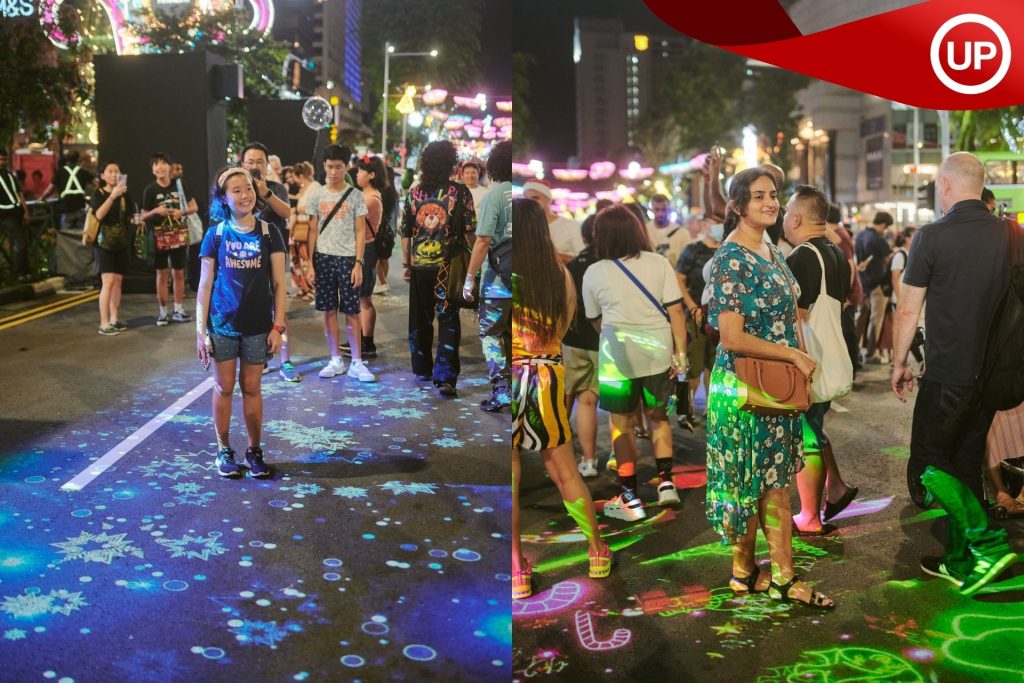
Projection mapping was also a highlight at The Great Christmas Eve Street Party (for which we were the Official Production Partner) in 2023, much to the delight of party-goers.
See case study: The Great Christmas Eve Street Party
Executed expertly, projection mapping brings new rich textures and perhaps more importantly, attention, to surfaces or structures that your audiences wouldn’t normally care to look twice at. The result is an event experience that’s both surprising and unforgettable.
3. AI-powered content summarisation
If your event is going to span several tracks, sessions or days, chances are your attendees won’t be able to fully recall your content. They may even miss out on the key insights that they’re expecting to learn about.
This is why it’s not uncommon for video links and presentation decks to be part of a post-event communication plan. But attendees will still be forced to comb through hours’ worth of information to get to what they need while missing out on off-screen conversations entirely.
Video: snapsight by Gevme
All that changed this year, when we saw AI being integrated into how event organisers are communicating with their attendees on-site. By picking up information shared both during conversations on stage and in on-screen content – then summarising it in real time, an AI-powered tool such as snapsight by Gevme is able to deliver bite-size takeaways to attendees even as a keynote, panel or workshop is still happening.
Needless to say, this frees up the resources that you had to allocate to organising your event content and leaves you to focus on leveraging the buzz generated by your event to engage and convert more attendees.
4. Augmented reality (AR)
Like AI, AR has enjoyed a breakout year in the event industry – and with good reason. By overlaying digital imagery onto the real world, AR allows your audiences to interact with their surroundings in unique, often whimsical ways. Think seeing a 3D model of your product pop up when your audiences point their phones at your booth or being introduced to your speakers with virtual graphics.
But AR isn’t just winning event organisers over by giving them the capability to design dynamic event experiences – its growing adoption is also driven by the emergence of AI as a tool to create highly realistic 3D models, sleek animations and eye-catching visual effects in seconds, making custom AR experiences vastly more accessible, even to smaller-scale events.
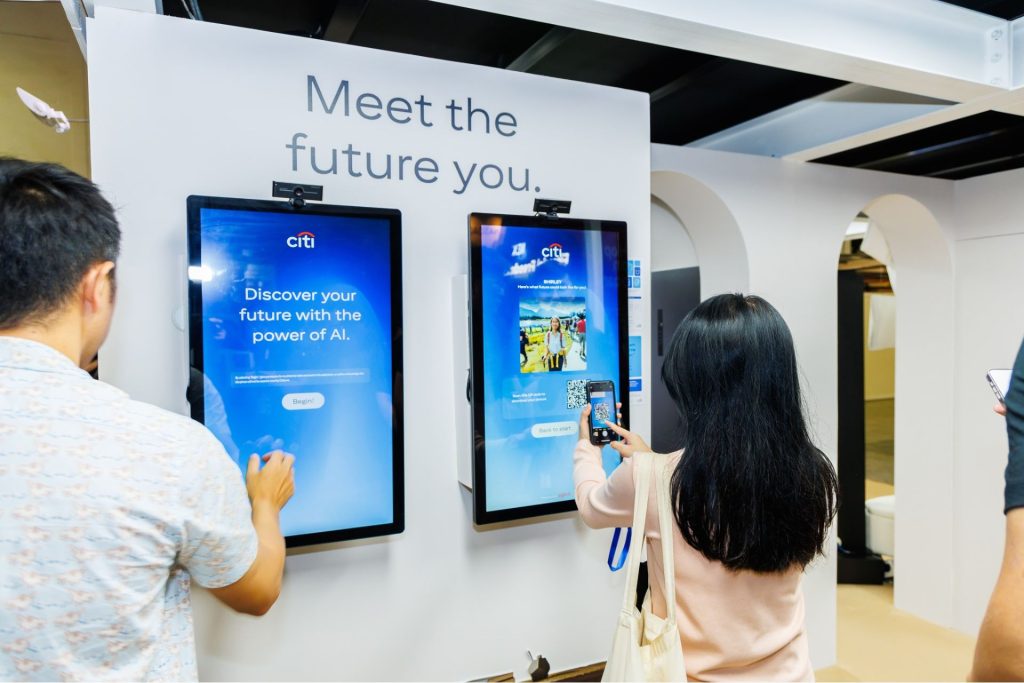
For Citi’s booth at Seedly Personal Finance Festival 2024, we introduced a photo booth that overlaid AI-generated outfits and environmental backdrops onto visitors’ faces. It was a fun way to help visitors envisage their futures based on the lifestyles that they wish to lead and their investment strategies. Visitors could also download their snapshots immediately, adding shareability to the AR experience.
5. Contactless event registration
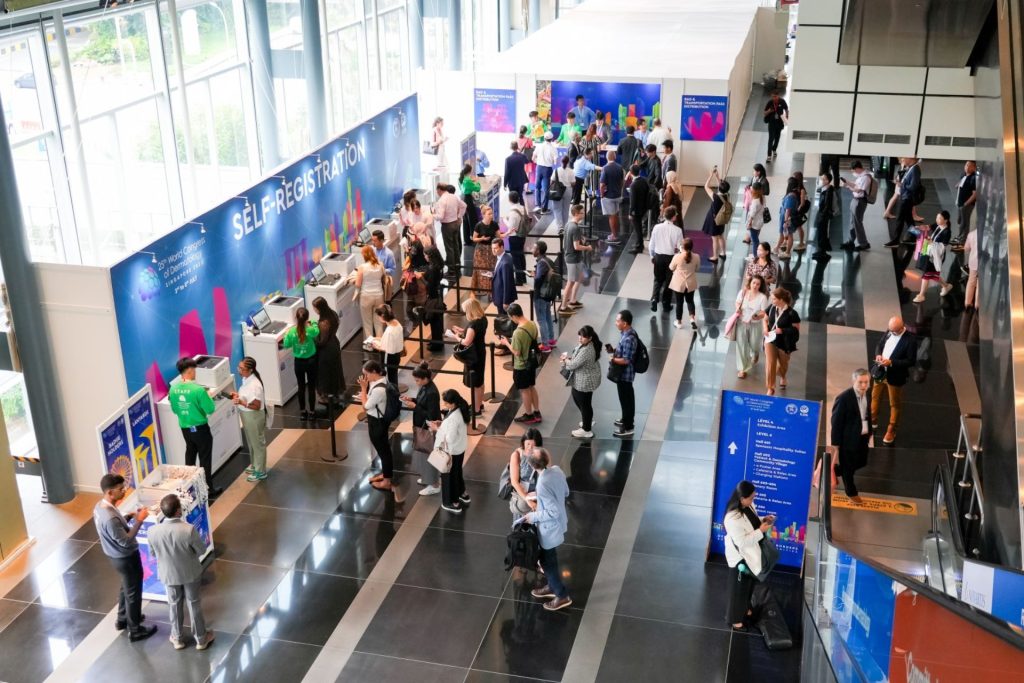
Contactless methods of checking attendees into events really took off during the pandemic, with event organisers keen to keep to safety guidelines. The convenience it brings to both event organisers and attendees means it has become a mainstay of the event industry. Today, it’s not uncommon to see attendees scanning a QR code at self-service registration kiosks, complete with badge printing capabilities.
Additionally, facial recognition technology debuted as a contactless registration method during the pandemic. It offers an even more seamless check-in process, with attendees not even needing to locate their unique QR codes from their phones. But its use has been guarded by privacy regulations, so it hasn’t enjoyed the same lightlight as QR code registration has, at least in Singapore.
No matter which method you choose to adopt for your event, it’s hard to argue against what contactless event registration promises: a fast, efficient check-in process – especially important for high-traffic events such as conferences, trade shows, exhibitions, sporting events, concerts and festivals.
Transform your event with the right combination of event technology
With so many types of event technology at your disposal and even more use cases to consider for each, identifying the perfect event technology (or a combination of different types of event technology) to integrate into your event can be tricky.
Whether it’s forging a deeper level of engagement between your attendees and your event, building experiences that surprise and delight your attendees, or simply making your event effortless to experience, being able to measure the impact you’re aiming to create with your event against the cost of implementing your preferred event technology is key.
If you need expert guidance on picking out the ideal event technology for your next event, you’re in the right place. We’ll be more than happy to discuss a plan for integrating the right event technology across your different event touchpoints, tailored to your event needs and goals.
Our Venue Partners
Raffles City Convention Centre (Part of Fairmont Singapore & Swissôtel The Stamford) | Suntec Singapore | Pan Pacific Singapore | Carlton Hotel Singapore | Four Seasons Hotel Singapore | NTUC Centre | M Hotel Singapore City Centre | Orchard Hotel Singapore | Garden Pavilion @ The Ritz-Carlton, Millenia Singapore | Grand Copthorne Waterfront Hotel | Bridge+ Ascent | Ola Beach Club | Changi Cove | Ngee Ann City Civic Plaza | Urban Green Rooms (Orchard Road)

